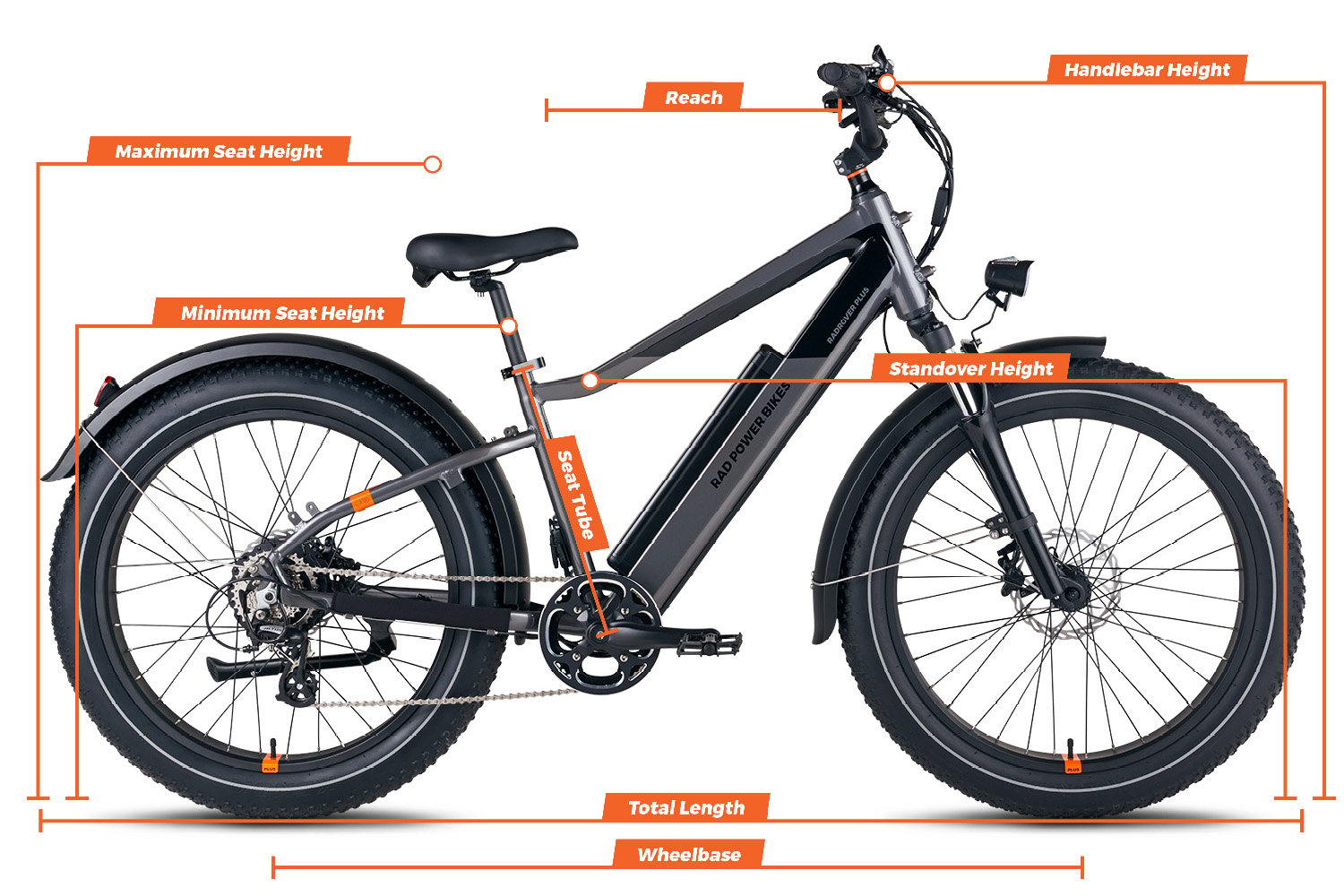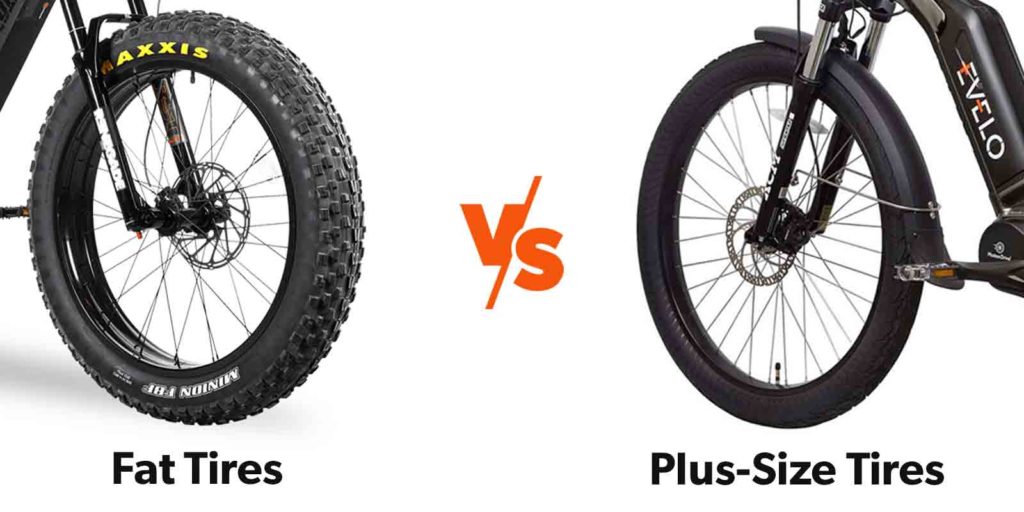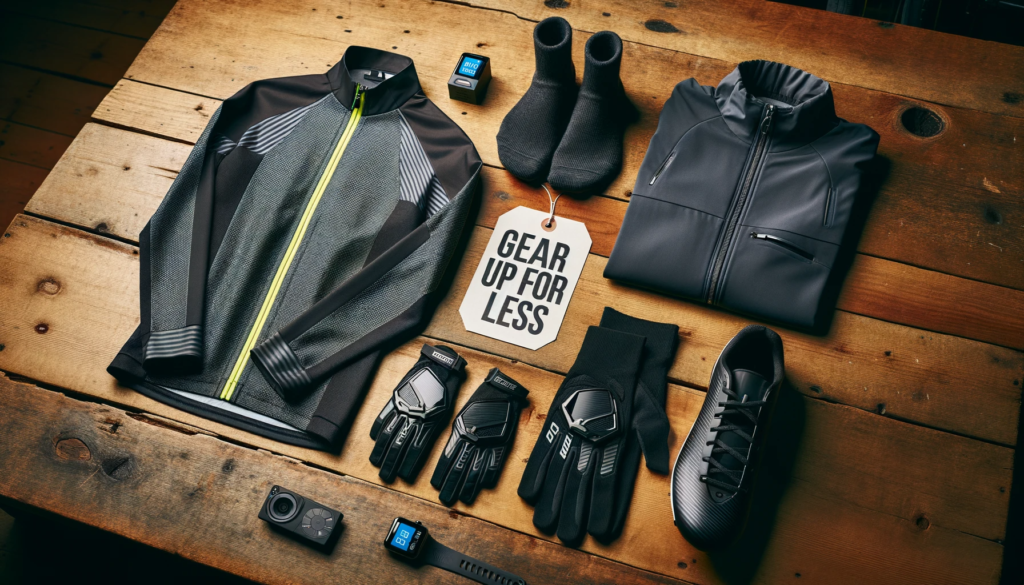To determine the size of fat tire bike you need, measure your inseam and refer to the manufacturer’s size chart to choose the appropriate frame size. Consider factors such as your riding style and terrain when selecting the tire width.
When choosing the right fat tire bike, it’s essential to consider your body measurements and riding style. The size of the bike frame and tire width can significantly impact your comfort and performance on different terrains. By understanding how to measure your inseam and referring to the manufacturer’s sizing chart, you can ensure a suitable frame size that provides the best fit.
Additionally, considering the tire width that matches your riding style and terrain will help you make an informed decision. This way, you can find the perfect fat tire bike size for your needs and enjoy an optimal riding experience.

Credit: radpowerbikes.ca
Considerations For Choosing The Right Size Fat Tire Bike
Choosing the right size fat tire bike is important for a comfortable and enjoyable riding experience. There are a few considerations to keep in mind when determining the size that is best for you:
- Body Measurements: Take into account your height, leg inseam, and arm length. These measurements will help narrow down the appropriate frame size for your body.
- Rider Experience: Consider your skill level and riding style. If you are a beginner, you may prefer a smaller size for better control. Advanced riders may opt for a larger size for increased stability and speed.
- Intended Use: Think about where and how you will be riding. If you plan on mainly riding on smooth roads or trails, a smaller size may be suitable. If you’ll be tackling rough terrain or participating in off-road adventures, a larger size may be more appropriate.
By considering these factors, you can confidently select the right size fat tire bike for a comfortable and enjoyable ride.

Credit: m.youtube.com
How To Measure Your Body For A Fat Tire Bike
When determining the right fat tire bike size–
- Start by measuring your inseam length. This measurement helps you choose a frame size that fits your legs comfortably.
- Next, consider your height to ensure proper body positioning on the bike. A bike that is too big or small can lead to discomfort and poor performance.
- Don’t forget to measure your arm length as well. This helps determine the reach to the handlebars for a comfortable riding experience.
Taking these measurements will guide you in selecting the perfect fat tire bike size for your body.
Factors To Consider Based On Rider Experience
- Beginner Riders: When determining the size of a fat tire bike for beginners, it’s crucial to consider a comfortable riding position and stability. A smaller frame might be ideal for novice riders as it offers better control and handling. Additionally, a lower standover height ensures easy dismounting, promoting confidence and safety.
- Intermediate Riders: For riders with some experience, a medium-sized fat tire bike may be suitable. This size provides a balance between agility and stability, allowing intermediates to handle more challenging terrains. A slightly larger frame also accommodates improved maneuverability when navigating technical trails and obstacles.
- Advanced Riders: Experienced riders may benefit from a larger fat tire bike. A larger frame offers enhanced stability and control at higher speeds, making it ideal for advanced riders tackling aggressive trails. A longer wheelbase and increased space for body movement can provide better handling and performance in demanding off-road conditions.

Credit: m.youtube.com
Matching Bike Size To Intended Use
Matching Bike Size to Intended Use can significantly impact your riding experience. For trail riding, opt for a bike that offers good maneuverability and control. If you plan on snow riding, consider a larger tire size to provide better traction and stability. When riding on sand, a wider tire helps to prevent sinking. It’s crucial to ensure that the fat tire bike you select matches your intended terrain and riding style.
Choosing The Right Frame Size
When it comes to determining the correct size for a fat tire bike, it’s essential to consider frame size measurements such as standover height. This measurement denotes the space between the top tube and the ground when straddling the bike. Having the appropriate standover height ensures comfortable riding and easy dismounting.
Moreover, it is crucial to consider the distance from the saddle to the handlebars, commonly referred to as reach. This factor directly impacts the rider’s comfort and posture during extended rides. Therefore, it is advisable to consult with a professional at a bike shop to ensure the perfect fit for your fat tire bike.
Importance Of Bike Fit
A properly fitted bike is crucial for achieving optimal comfort and efficiency while riding. The right bike size ensures that you can ride comfortably for long distances without experiencing discomfort or pain. When your body is positioned correctly on the bike, you can pedal smoothly and efficiently, maximizing your energy output.
Bike fit is especially important for fat tire bikes, as these bikes are often used in off-road and challenging terrains. Having the right bike size helps prevent injuries by reducing the strain on your body. When your bike is too small or too big, you may experience undue pressure on your joints, leading to potential injuries.
It is important to consider various factors when determining the size of the fat tire bike you need, such as your height, inseam length, and riding style. Consulting a professional or utilizing online fit calculators can help you determine the best size for your fat tire bike, ensuring a comfortable and enjoyable riding experience.
Modifying Bike Fit With Adjustments
When it comes to adjusting your fat tire bike’s fit, there are a few key areas to focus on: the seat position, handlebar height, and stem length. Proper adjustment of these components can greatly enhance your riding experience and ensure maximum comfort.
Seat Position
The seat position is crucial for achieving an optimal riding posture. Adjusting the seat height is the first step. Make sure your feet can comfortably reach the pedals with a slight bend in your knees when the pedal is at its lowest position. Additionally, the seat angle affects comfort and power transfer. Experiment with small adjustments until you find a position that feels comfortable and allows for efficient pedaling.
Handlebar Height
The handlebar height affects how much weight is on your hands and wrists. For a more upright and comfortable riding position, raise the handlebars. Lower them for a more aerodynamic and aggressive stance. Experiment with different heights until you find a position that feels natural and minimizes strain on your body.
Stem Length
The stem length determines the distance between the handlebars and the saddle. A longer stem will provide a more stretched-out position, suitable for riders seeking speed. On the other hand, a shorter stem will result in a more relaxed and upright position. Take into consideration your body’s proportions and riding preferences when choosing the appropriate stem length.
Consulting With Experts And Test Riding
Consult with bike shop professionals to determine the correct size of fat tire bike for your needs. Test ride different sizes to find the most comfortable and suitable fit. Consider factors such as height, weight, and riding style when selecting the appropriate bike size. Expert advice can help you make an informed decision and ensure an enjoyable riding experience.
Frequently Asked Questions For What Size Fat Tire Bike Do I Need
How Do I Know What Size Fat Tire To Get For My Bike?
To determine the right fat tire size, check your bike’s current tire size or consult the manufacturer’s specifications.
Should I Size Up Or Down In A Fat Bike?
It is recommended to size up in a fat bike to accommodate the larger tires and provide more stability.
Is A 26 Inch Bike Good For What Height?
A 26 inch bike is suitable for individuals with a height ranging between 5’3″ and 5’7″.
What Size Bike Do I Need For My Height?
The right bike size is based on your height. Measure your inseam and use a sizing chart for guidance.
Conclusion
Ensuring the right fat tire bike size is key for a comfortable and enjoyable ride. Consider your height, riding style, and terrain for the best fit. Always seek expert advice before making a purchase. A well-fitted bike enhances performance and reduces the risk of injuries.
Choose wisely and pedal on confidently.




